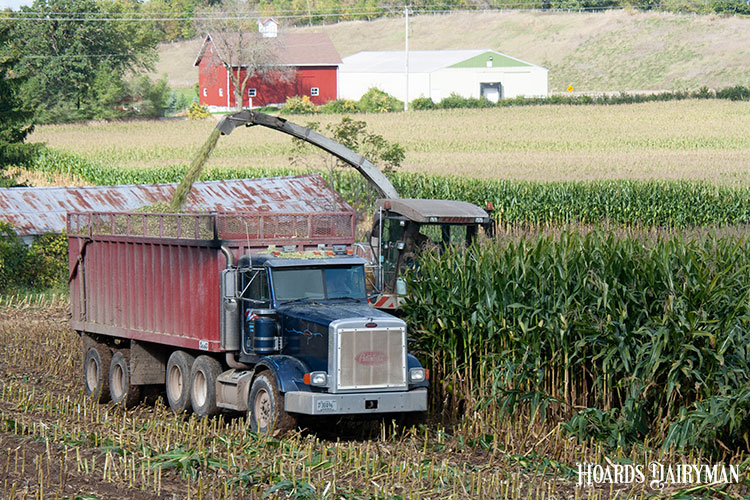
Thanks to the combination of 5% fewer U.S. acres planted in corn this year and a slight reduced estimate of per acre yield compared to 2021, USDA’s September World Agricultural Supply and Demand Estimates (WASDE) projected that 7.7% less corn will be produced this year compared to last. These tight supplies keeping prices high lend even more weight to the annual question of, “What is corn silage worth this year?”
First, grain trading prices as well as local market conditions typically form the basis of a silage contract between a corn grower and a dairy farm. The buyer and seller will need to agree on what sources and values to use for this baseline.
To then translate bushel prices to silage tons, Joe Lauer of the University of Wisconsin-Madison said the recommendation is often to multiply the price of grain by 7.5, 8, or 8.5 as there are usually 8 bushels of grain in a ton of silage. Negotiating by the ton instead of by the acre gives a much more accurate picture of yield, the corn agronomist added.
More detailed analysis
Especially in times of high grain prices, the corn grower’s crop’s value for dry grain essentially serves as a price floor. Lauer advised a seller to calculate potential gross grain income given the expected yield, subtract all grain harvesting costs, and then add back in the fertilizer value of the stover being removed that otherwise would have remained.
“The result from these calculations is then divided by the estimated corn silage yield to give an equivalent price per ton that equals the net grain return,” Lauer explained in an agronomy fact sheet.
Multiple production factors can affect how grain yield is estimated. Lauer first noted that harvest timing must be considered because grain yield can still climb 5% to 12% when the kernel is at 50% kernel milk. However, no further yield will develop after the black layer stage.
Growing conditions and hybrid type will also affect grain development. Research has found brown midrib (BMR) hybrids have significantly lower grain equivalents than conventional or even bioengineered hybrids, Lauer said.
The silage buyer will typically take on harvesting costs and use those numbers to adjust price from the price of standing corn, he continued. They may also take into account the cost of having corn and straw to feed instead of silage. Forage quality can also play into the discussion depending on milk returns.
To simplify these calculations, the University of Wisconsin-Madison has developed a spreadsheet and smartphone apps corn growers and silage buyers can use. Find more information here.





